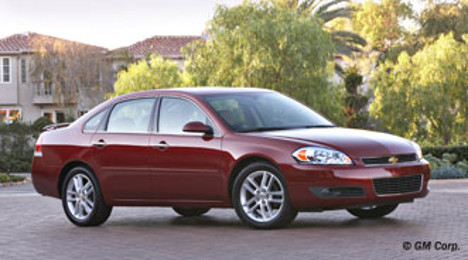After dropping a bit in October, wholesale prices were on the way up again this past month.
The ADESA Canada Used Vehicle Price Index, powered by ALG, shows that auctions prices rose by an average of 0.9 percent from October rates.
The midsize car segment saw one of the biggest spikes in price, with rates rising by $323 (or 4.1 percent) from October. This segment ended the month with an average price of $8,225 in the lanes.
The compact SUVs also saw a slight increase, with prices rising by $65 (or 0.6 percent) to rest at an average of $11,461.
Rounding out the car segments, the mid-compacts saw prices drop by 1.3 percent from October to sit at $6,764 by the of the month. This marks a $88 decline from October.
The biggest price drop last month was seen in the midsize SUV segment, with prices dropping by $502, or 4.5 percent. The average price for a midsize SUV last month at auction came in at $10,580.
Also seeing a large drop in price after holding strong retention throughout the first half of the year was the minivan segment. Minivans went for an average of $7,516 this past month, representing a 3.5-percent (or $276) price drop from the prior month.
Full-size pickup prices remained consistent with October levels. The average price for a full-size pickup at auction last month was $17,025.
And even though new and used sales are elevated, Canadian consumer confidence dropped in November.
"The Canadian economy continued to soldier on in November – consumer confidence declined 1.4 points to 82.7 (third consecutive month of declines) amid concerns about the strength of the future job market, the unemployment rate rose 0.1 percentage point to 6.6 percent due to job losses in retail and professional services and national gasoline declined by approximately $0.06 per litre to end the month at $1.12 per liter," Geoff Helby, Canada regional director, partner development at ALG, reported.
Gas prices continued dropping last month, but the decline didn’t seem to impact auction prices.
"While consumer confidence declined for the third consecutive month, new-vehicle sales growth was spurred on by year-end clearance efforts by manufacturers and dealers," said Helby.
In fact, new-vehicle sales increased by 3.6 percent year-over-year, coming in at 138,694 last month, Helby reported. With new sales up by 5.4 percent from 2013 rates, it seems dealers will not only be enjoying more new sales, but also will be receiving more trade-ins to fill their used lots in the coming months as used supply remains tight and prices elevated.
Canadian Black Book editorial director Josh Bailey told Auto Remarketing Canada back in November, since it has been such a strong year for new-car sales, he predicts manufacturers will capitalize on that momentum during the holiday season and will continue to ramp up incentive spending.
“So, I think this time could be a great time to buy a new car, which in turn means there are a significant amount of trade-ins coming in, so it might be a good time to buy a used car, too,” Bailey said.
And though 2015 has the potential to be a “transition year,” showing little price or supply movement up or down, Bailey said: “We do think that coming into 2017 and 2018, we are going to get back into a situation where there is not so much grappling for the first car that comes down the auction lane.”
Used supply is tight. Are you sick of hearing that yet?
Well, you may be in luck, as Canadian Black Book editorial director Josh Bailey voiced some promising predictions for supply and used prices for the near future.
Supply is expected to loosen this coming year, and as a result, prices are likely to start dropping.
In fact, they already have.
This past September, according to the ADESA Canada Used Vehicle Price Index, wholesale prices fell by an average of 0.4 percent. And in October, the Index fell by another 0.2 percent.
But Bailey says soon the price drops will move beyond seasonality and as predicted may end up looking a bit more like the prerecession market.
The Truck Anomaly
In looking back over the past year at used-price trends for 4-year-old vehicles, Bailey pointed out one phenomenon that is bucking industry trends right and left: full-size pickup price movement.
When a vehicle ages, it is supposed to depreciate, right? Well, there are exceptions.
Going back to January, 4-year old full size pickups were holding about 44 percent of their value.
As of mid-October, the segment was holding 44.7 percent of its value. This is slightly higher than the January rate, and at some points this year, the segment saw prices rise up almost 2 percentage points from rates seen at the beginning of the year.
This rate is also higher than the general equity average of 43.9 percent MSRP of 4-year-old vehicles, as of mid-October.
“This is quite unusual, since normally, vehicles are still a depreciating asset, even though when we look year-over-year coming out of the recession, things have been picking up as a whole,” said Bailey. “But throughout The course of the year, you expect things to go down, and that has not been the case with the full-size trucks.”
Bailey said this trend defies most analysts’ ability to explain. Similar to trends seen in the U.S., gas prices are dropping, but at the beginning of the year they were climbing — and so were truck prices.
“So there was a disconnect between what most people would expect to see with rising gas prices and larger vehicle prices,” Bailey said.
There has also just been an increase in general interest in trucks when you observe Canadian new-vehicle sales.
“Trucks are tremendous in growth and that is spilling over into the used-car market,” Bailey added.
Competition in the Luxury Market
Another aspect of the wholesale market that has been making waves this year: luxury vehicles.
Their story has been a bit different than the trucks this year, with luxury cars seeing some of the largest price declines in the market.
Bailey said the premium luxury segment, sporting vehicles such as the BMW 7 Series and Audi A8, saw some of the steepest drop offs in price in the lanes.
But Canadian Black Book also noticed the entry luxury cars and the small luxury SUVs saw some comparatively sharp declines, as well.
Bailey said this decline is mostly due to the competitive landscape for luxury manufacturers in Canada.
“When we look at the competitive landscape in Canada, the apparent battle for No. 1 position in the luxury market is really creating some downward pressure on pricing on the new side, and that spills over into the used-car market,” Bailey said. “It is unrealistic to believe you could sell a 1-year-old vehicle for more than what you could spend for a new vehicle.”
Strong incentive spends in the luxury market are cascading down to the used side, pushing high-end vehicle prices down at auction.
The Skinny on Supply
Prices have been rising this year, but analysts predict this may be the last 12 months the industry will experience an overall annual price spike as supply is expected to expand in 2015.
As of mid-October, the general average equity rate for 4-year-old vehicles was sitting at 43.9 percent of MSRP.
This is up 1.6 percent from 2013; and compared to 2012, this rate is up 3.2 percent.
“We’ve seen pretty steady increases for the past of couple of years,” Bailey said.
For the rest of the year, Canadian Black Book predicts there will still be a demand for used cars that cannot be met by the current supply.
Bailey also pointed out the vehicles that are coming off lease are equity-heavy, a trend that impacts supply, as well.
“I think some people have underestimated the fact that even with the vehicles that are coming off lease, since we are looking at 4-year-old vehicles now, even in 2010 there was a level of pessimism in the residual forecasts that were set. That then translates to a lot of equity in the cars coming off lease now,” he said. “The effect of that is both customers and the dealers who are taking them back, they are both buying those vehicles up and stemming from them hitting any open market. That’s been a compounding factor in this aspect.”
Though prices remain higher than levels seen in 2013, over the last couple of months, the industry has definitely seen rates decline.
In fact, rates dropped nearly 1 percent from October to November, which Bailey pointed out is a fairly steep decline.
“It’s not unheard of, but certainly this time of year dealers tend to be a little more reluctant to bring extra inventory into stock because of as soon as Halloween is over we are into Christmas, and people’s minds tend to drift away from big spends and toward shopping for Christmas. It’s a typical drop,” Bailey said.
Canadian Black Book predicts there will be some increase in supply next year, although once again, there will most likely be some positive equity in the vehicles coming off lease, which likely will contribute to the trend “of those cars getting scooped before they enter the open market,” Bailey said.
That said, in 2011, leasing rates were coming up, so more off lease product is expected to flow back into the market this coming year.
“It will be a little better than this year in terms of supply situation, but I don’t believe there is a great deal of room to grow the used car market, given the new-car market incentive situation,” Bailey said.
Though there are certain segments here and there that will experience growth, Bailey asserts the market is going to hit a plateau unless there is a willingness to move away from strong cash offerings and other incentives on the new-car side of the market.
“For 2015, we expect things to be similar to this year, and it won’t show the strong growth that we have seen for the last couple of years,” Bailey said. “For the end of this year, things will roll along at a steady pace.”
Since it has been such a strong year for new-car sales, Bailey predicts manufacturers will capitalize on that momentum during the holiday season and will continue to ramp up incentive spending.
“So, I think this time could be a great time to buy a new car, which in turn means there are a significant amount of trade-ins coming in, so it might be a good time to buy a used car, too,” Bailey said.
And though 2015 has the potential to be a “transition year,” showing little price or supply movement up or down, Bailey concluded: “We do think that coming into 2017 and 2018, we are going to get back into a situation where there is not so much grappling for the first car that comes down the auction lane.”
October — a seasonally weak month in the lanes — didn’t bring any surprises this time around.
According to the ADESA Canada Used Vehicle Price Index, after being adjusted for seasonality, wholesale prices fell by an average of 0.2 percent from September.
All segments but one saw prices fall this past month, according to analysis from Trevor Henderson, ADESA Canada chief operating officer.
The one trend bucker was the compact SUVs, which actually saw prices rise by 4.9 percent or $536 last month.
On the other hand, minivans saw prices fall at the most rapid pace out of all segments last month, posting double-digit price declines. Rates fell for minivans by 11.9 percent or $1,052 in October.
They were followed by the mid-compact cars with a 9.5 percent or $716 decline. Midsize-cars were up next with an 8.8 percent or $765 drop.
Larger units continued to perform better as gas prices drop across North America. National gasoline prices fell by approximately 10 cents per liter last month to end the month at $1.18 per liter in Canada.
Midsize SUVs saw prices fall by 3.1 percent or $353 last month. And full-size pickups continued to lead the market in price retention with a slight 0.7 percent or $114 drop.
According to RVI Risk Outlook newsletter for the third quarter, prices had already started falling in the lanes in September. Used-car prices, after adjusting for MSRP, fell by 1.1 percent from August rates, though rates were still up 1.4 percent year-over-year.
RVI predicts that, going forward, a growing supply of used vehicles in the Canadian market will contribute to softening used-vehicle prices starting in 2015.
In fact, though used-vehicle prices have increased overall this year, 2015 may turn the tides, and according to RVI, used prices will fall by 3.5 percent from 2017.
The October reading of the Manheim Canada Used Vehicle Value Index was 7 points stronger than the year-ago level and almost 5 points higher than September’s index, according to an analysis provided by Manheim this week.
Among the individual segments, the ones that saw sequential gains were luxury cars (up 8 points), midsize units (up 1.6 points), vans (up 10.8 points) and SUVs (up 4.7 points).
Compacts fell 1.3 points and pickups were off 0.9 points.
This news comes just days after an assessment of used-car pricing by Scotiabank.
In its Global Auto Report released Friday, the company said that used-car prices appear to have “peaked” in Canada and have started falling, in part due to rising supply of off-lease vehicles.
Though the U.S. is in the lead for used-car price softening across North America, Canada has started to follow suit after years of solid increases.
"This comes on the heels of the lowest lease returns in more than a decade last year and represents a positive for an industry that has faced a shortage of pre-owned vehicles for some time," said Carlos Gomes, senior economist and auto industry specialist at Scotiabank. "However, we expect the supply response and the price correction to be modest as off-lease volumes will remain well below pre-recession levels for an extended period."
Though used-car prices in Canada were spiking in excess of 3 percent year-over-year through June, cooler weather brought with it softer prices in the lanes.
Rates have weakened in recent months, according to Scotiabank, and during October, prices fell below 2013 rates.
“Rising incentives on new cars and light trucks during the summer likely contributed to the slide in used-vehicle prices, but we believe that the decline has been mainly driven by an increase in the availability of vehicles coming off-lease,” the report stated.
That said, leasing is still 40 percent below pre-recession levels in Canada. Consequently, Scotiabank expects off-lease volumes to grow less than 20 percent above the low levels of 2013. Last year, the number of off-lease vehicles fell to less than 400,000 units, which is the lowest level in more than a decade.
According to the report, the pickup in leasing will be slow, and even by 2016, lease returns are likely to remain below pre-recession levels.
“Nevertheless, the improvement in used vehicle supply is positive, as a shortage of pre-owned models has dampened used vehicle purchases in recent years,” the report stated. “After rising steadily over the past decade, sales of pre-owned vehicles peaked in Canada at more than 3 million units in 2011, but subsequently posted back-to-back annual declines due to a shrinking supply of used models.”
Scotiabank revealed some good news for dealers and those buying in the lanes this Halloween morning.
According to Scotiabank’s Global Auto Report, used-car prices appear to have “peaked” in Canada and have started falling, in part due to rising supply of off-lease vehicles.
Though the U.S. is in the lead for used-car price softening across North America, Canada has started to follow suit after years of solid increases.
"This comes on the heels of the lowest lease returns in more than a decade last year and represents a positive for an industry that has faced a shortage of pre-owned vehicles for some time," said Carlos Gomes, senior economist and auto industry specialist at Scotiabank. "However, we expect the supply response and the price correction to be modest as off-lease volumes will remain well below pre-recession levels for an extended period."
Though used-car prices in Canada were spiking in excess of 3 percent year-over-year through June, cooler weather brought with it softer prices in the lanes.
Rates have weakened in recent months, according to Scotiabank, and during October, prices fell below 2013 rates.
“Rising incentives on new cars and light trucks during the summer likely contributed to the slide in used-vehicle prices, but we believe that the decline has been mainly driven by an increase in the availability of vehicles coming off-lease,” the report stated.
That said, leasing is still 40 percent below pre-recession levels in Canada. Consequently, Scotiabank expects off-lease volumes to grow less than 20 percent above the low levels of 2013. Last year, the number of off-lease vehicles fell to less than 400,000 units, which is the lowest level in more than a decade.
According to the report, the pickup in leasing will be slow, and even by 2016, lease returns are likely to remain below pre-recession levels.
“Nevertheless, the improvement in used vehicle supply is positive, as a shortage of pre-owned models has dampened used vehicle purchases in recent years,” the report stated. “After rising steadily over the past decade, sales of pre-owned vehicles peaked in Canada at more than 3 million units in 2011, but subsequently posted back-to-back annual declines due to a shrinking supply of used models.”
According to the report, one of the biggest dealer complaints fielded as of late was that a shortage of used models was pushing down on their volumes and margins.
Scotiabank took a look at AutoCanada — the only publicly traded dealership group in the country — to illustrate these results. The dealer group indicated margins on used-vehicles fell in the first half of the year to the lowest level in more than a decade.
The supply shortage has been concentrated in the 4- to 7-year-old segment, showing a fall off in leasing during 2008 to 2009.
Before the recession, leasing made up much of Canadian new-car sales, accounting for more than 40 percent of purchases. Leasing fell off the cliff in 2009 and averaged about 20 percent in 2011 before beginning to rise slightly, according to the report.
This trend is making vehicles 4 years and older much more expensive.
“We estimate that the price of a four-year old vehicle in Canada surged nearly 25 percent in the six years to late 2013 — double the increase in the price of one-year old models and more than triple the gain in new-car prices,” Scotiabank analysts said.
Older vehicles still remain pricey today, and the recent softening in used-car prices has been seen mostly among newer models.
Prices for older units have remained mostly flat over 2013 rates.
Off-lease vehicle supply expansion is expected to be relatively modest, rising by only 9 percent through 2017, according to Scotiabank.
“As a result, even as the number of off-lease returns approach 585,000 by 2017, this will still remain below the 605,000 units that were returned in 2010, when used car prices began their recovery from the downturn of 2008-09,” Scotiabank analysts pointed out.
And on top of off-lease vehicles coming into the market, used supply in Canada will most likely expand through trade-ins, as well, as new-car sales continue to soar.
According to the Scotiabank report, new passenger vehicle sales are up 13 percent in Canada from the year ago period, as of the end of September.
This increase lifts purchases to an all-time record predicted annual rate of 2 million vehicles.
According to Scotiabank, this spike guarantees that full-year 2014 sales will exceed 1.8 million units for the first time on record.
Prices for all segments in the lanes were falling last month, but one more fuel-efficient SUV segment lead the pack with a sizeable drop.
According to the ADESA Canada Used Vehicle Price Index, compact SUV prices fell by 7.6 percent, or $891, in September.
This was by far the largest decline after the index fell last month after being adjusted for seasonality.
Overall, according to the index, wholesale prices fell by an average of 0.4 percent.
The second-largest price drop was seen among the full-size pickups, which saw a decline of 4.5 percen, or $816.
Midsize cars were up next with a 2.8 percent or $222 decline, followed by the midsize SUVs with a 2.5-percent, or $295, decline.
Wrapping up the pack were minivans, with a 1.6-percent or $142 drop, and the midsize cars, showing a 1.2-percent or $108 decline.
According to ADESA Canada chief operating officer Trevor Henderson’s commentary on last month’s Index movement, the COO pointed out even though used prices were down, new-vehicles sales in Canada soared in September.
New-vehicles sales last month were up 12.6 percent year-over-year to sit at 167,919.
Year-to-date, overall sales are up 5.5 percent to a total of 1,424,568 vehicles sold.
And this past September wrapped up a third quarter that pushed the Canadian market to operate at a 2 million SAAR rate for the first time ever, Henderson noted.
According to an Ernst & Young report that cited LMC sales data, sales in Canada for Q3 came in at just over 515,000 units, which is up 17.3 percent year-over-year and up 9.4 percent from the second quarter.
“Numerous automakers broke sales records for the month of September with light trucks driving sales. The economy, as measured by GDP, has shown growth along with higher consumer confidence,” said Randy Miller, global automotive and transportation leader at Ernst & Young. ”Unemployment rate went down in the third quarter, and employment is expected to continue rebounding.”
Miller pointed out these factors should push sales up through the rest of the year. According to the report, sales for the full year are expected to break records with an annual increase of 3.9 percent, or 1.8 million units, versus 2013.
And as new sales and leasing continue to grow, this means more supply for the used market, which will lead to lower used prices in the lanes.
And looking at fall’s auction price environment so far, it seems these declines have already begun.
Wholesale prices started falling at a more rapid pace in September, with all segments seeing prices decline except for two: luxury cars and midsize cars.
The Manheim Canada September index was down last month, falling by almost three points from August’s reading of 92.6.
The decline also marks a 1-percent drop from September 2013.
Luxury car saw the strongest price retention, seeing an increase of 2.7 points from August on the index.
Midsize cars were up next with a 1.3-point rise.
On the other hand compact cars saw prices drop significantly in September; this segment’s index reading fell by 7.3 points.
Some of the larger units also saw prices fall last month.
Showing the biggest drop of any segment last month, vans saw a decline of 7.7 points.
Lastly, pickups and SUVs fell by 2.2 and 2.5 points, respectively.
It is apparent auction price declines are speeding up as the weather cools.
According to the latest RVI Market Update, the RVI Used Vehicle Price Index, which measures the wholesale values of used vehicles ages 2 to 5 years old, fell by only 0.2 percent in August.
And the ADESA Canada Used Vehicle Price Index also dropped in August, though just slightly, falling by 0.7 percent from July.
Used supply expansion may have a direct correlation to recent months' price drops in the lanes.
In fact, ALG predicts that between this past July and July 2018, used supply will increase by 178,000 units, putting downward pressure on used values.
And according to a recent RVI Risk Outlook report, as used-car supply increases over the next five years, used-car prices, on a nominal level, are predicted to drop by 4 percent from current levels by 2017.
If one looks a few years down the road, auction prices may illustrate more of a buyer’s market in Canada.
But for now, prices are high, and dealers’ pocketbooks are being stretched in the lanes.
With this in mind, Auto Remarketing Canada reached out to auction trend experts to give readers a window into what to expect in the lanes in the coming months and years.
Used-Price Relief on the Horizon
According to a July Canada Industry Report from ALG, more used units are set to begin flowing in — but again, it will not happen overnight.
ALG predicts that between this past July and July 2018, used supply will increase by 178,000 units.
“We can say with high confidence that increasing supply will be exerting a gradual negative pressure on values, though there are other opposing forces which will partially offset this trend. Movements by segment are even more challenging, as demonstrated by segments that exhibit a divergence from the overall trend,” the report stated.
And according to a recent RVI Risk Outlook report, as used-car supply increases over the next five years, used-car prices, on a nominal level, are predicted to drop by 4 percent from current levels by 2017.
Prices to Take One Last Jump
But much to dealers’ chagrin, this year will once again show slight year-over-year price increases in the lanes, says ADESA chief economist Tom Kontos.
“We expect low to single-digit year-over-year growth in used values by the end of 2014,” Kontos said.
That said, he explained though prices are staying at high levels, rates are “evening out,” over the course of the year so far.
“We have seen prices level out at high consistent rates,” Kontos added.
Don Wallace, general manager of Manheim Toronto, echoed much of the same sentiment, noting that though prices continue to show some modest seasonal decline, the trends are mostly positive.
“With a softening demand at current price points, I believe the market hasn’t fully absorbed the true market correction. That being said, the majority of categories are still positive. I expect this trend to continue for the balance of the year,” Wallace explained.
Consumer Trends Impacting Wholesale Values
One segment, in particular, has seen unusually strong price retention at auction: the SUVs. In fact, this segment has been showing similar trends to the pickup trucks in the U.S. market — where trucks are seeing stronger-than-average prices, as well.
Kontos explained that Canadian consumer trends are contributing to the SUV’s strong price retention.
“The spikes in SUV prices are indicative of a changing social mindset in Canada. Many shoppers are seeing the benefit of having a larger vehicle, and consequently, demand for SUVs is pushing rates up,” said Kontos. “They are following Americans in that sense, leaning toward bigger units.”
When asked whether this trend is having any impact on the smaller car segment prices, Kontos shares that it hasn’t had much of an effect as used supply remains tight overall.
Potential Negative Effects of Long-Term Loans
So when can dealers expect to see prices ease in the lanes? Well, as most know, this question is tied directly to used supply.
Leasing dropped off during the economic turmoil of 2008 and 2009, tightening used supply dramatically, as lease penetration in Canada was very high, pre-recession.
Unfortunately, this trend isn’t expected to flip-flop anytime soon. Though leasing has expanding slightly since 2009 lows, many Canadians have turned to long-term loans as the credit environment has loosened in recent years.
Kontos explains this trend doesn’t bode well for the remarketing pipeline.
“Many people are stuck in long-term loans and won’t even be available to enter the leasing and new-vehicle market for years to come,” said Kontos. “Many of these buyers are upside down — or owe more on their vehicle than the car is worth — so these vehicles aren’t coming in as trade-ins, either.”
He also pointed out many of these same vehicle owners may have been lease customers before the Great Recession, meaning many lessors have left the market for the foreseeable future.
As for whether leasing will ever pick up to pre-recession rates, Kontos said, “Never say never, but looking at the current environment, it is unlikely to reach pre-recession highs anytime soon.”
This trend and other factors are making it difficult for used supply to make any kind of significant comeback.
“We won’t see used supply loosen much for the next two years,” Kontos predicted.
Another trend to look at when considering future used supply is new-car retail sales, as many consumers, like Kontos said, have shifted to buying over leasing.
In July, new sales grew by 11.3 percent, according to a DesRosiers Automotive Report.
And with year-to-date sales up 4.15 percent in July, Wallace said, “We don’t expect leasing levels to increase significantly.
“This will continue to constrain traditional off-lease volume, but that doesn’t mean this isn’t ample pre-owned vehicles in the market for trade,” Wallace said.
Wallace said Manheim Toronto was seeing a wider selection of vehicles through dealer consignment as of late summer.
“Dealers are focusing more on turning their trades and pre-owned inventory on a timely basis which is providing a great source of vehicles in all makes, models, content and condition for our wholesale buyers,” Wallace said.
And though leasing may be dropping off, more new sales means more trade-ins.
And growing new sales is always a good sign for used supply, and a welcome trend after the recession lows of 2009, when new-vehicle sales and leasing dropped off to just over 1.46 million vehicles sold.
Editor's Note: This Power story first appeared in Auto Remarketing Canada Digital Magazine's Power 150 issue. Check our the new issue for more on used-car trends and movement in the industry.
Used-car prices began falling slightly in the lanes as summer drew to a close.
According to the latest RVI Market Update released this week, the RVI Used Vehicle Price Index, which measures the wholesale values of used vehicles ages 2 to 5 years old, fell by 0.2 percent from July.
That said, prices have been abnormally high since the recession as used supply remains tight, and August’s prices were still 4.8 percent higher than rates seen last year.
The used index, on a nominal level, fell by 0.2 percent from July and was also 4.8 percent on a year-over-year basis.
The ADESA Canada Used Vehicle Price Index also dropped last month, falling by 0.7 percent from July.
And though the RVI index saw a slight drop overall, on a segment level, the changes in residuals were mixed, according to the report.
Among the higher volume segments, subcompacts saw the greatest spike in value, rising 7.2 percent from July.
Small sedans also saw prices increase, rising by 2.5 percent from July rates. Interestingly, another smaller, more fuel-efficient segment experienced movement in the opposite direction. The compact car segment saw prices fall by 2.4 percent last month.
Seeing the largest percentage price decline last month were the full-size sedans, which saw prices drop 8.9 percent from July and 2.1 percent year-over-year.
Minivans touted some of the biggest drops in the lanes, as well, with prices falling by 6.1 percent from July. Small SUVs and midsize SUVs were also some of the month’s biggest movers, seeing prices drop by 4.7 percent and 4.8 percent, respectively.
Gas prices seem to be playing little to no role on auction price movement, as rates fell to $1.32 per liter in August, down from $1.35 in July. This is 0.4 percent cheaper than rates seen in August 2013.
Editor's Note: For more on auction prices and used supply, see our Power Supply update in the Auto Remarketing Canada Digital Magazine Power 150 issue set to be released this week.
After falling close to 1 percent in July, the ADESA Canada Used Vehicle Price Index was on the way down once again last month.
After being adjusted for seasonality, the index fell by 0.7 percent from July rates.
The index, powered by ALG, showed that all vehicle segments saw prices drop last month, except for the compact SUVs, whose prices held steady from the month before.
ADESA chief economist Tom Kontos explained Canadian consumer trends are contributing to the SUV’s strong price retention.
“The spikes in SUV prices are indicative of a changing social mindset in Canada. Many shoppers are seeing the benefit of having a larger vehicle, and consequently, demand for SUVs is pushing rates up,” said Kontos. “They are following Americans in that sense, leaning toward bigger units.”
This past month, the midsize cars saw the largest declines, dropping by 5.8 percent, or $535, followed by the midsize SUVs, which dropped by 4.5 percent, or $558.
Mid-compact cars also saw a significant decline, dropping by 3.9 percent, or $315. The minivans were up next with a 2.1 percent or $188 decline.
Full-size pickups, which are seeing price strength in the U.S., as well, experienced one of the smallest price declines last month. The segment saw prices drop by $99, or 0.5 percent, from July numbers.
Prices have been high in the lanes since the recession, but the tides may be turning. Rates in the lanes have started dropping this summer, and analysts at RVI are predicting prices will fall by 4 percent by 2017.
Editor’s Note: For more insight into used supply and prices, see our upcoming Power Supply feature. This will publish in the Auto Remarketing Canada Digital Magazine issue set to hit inboxes next week.












